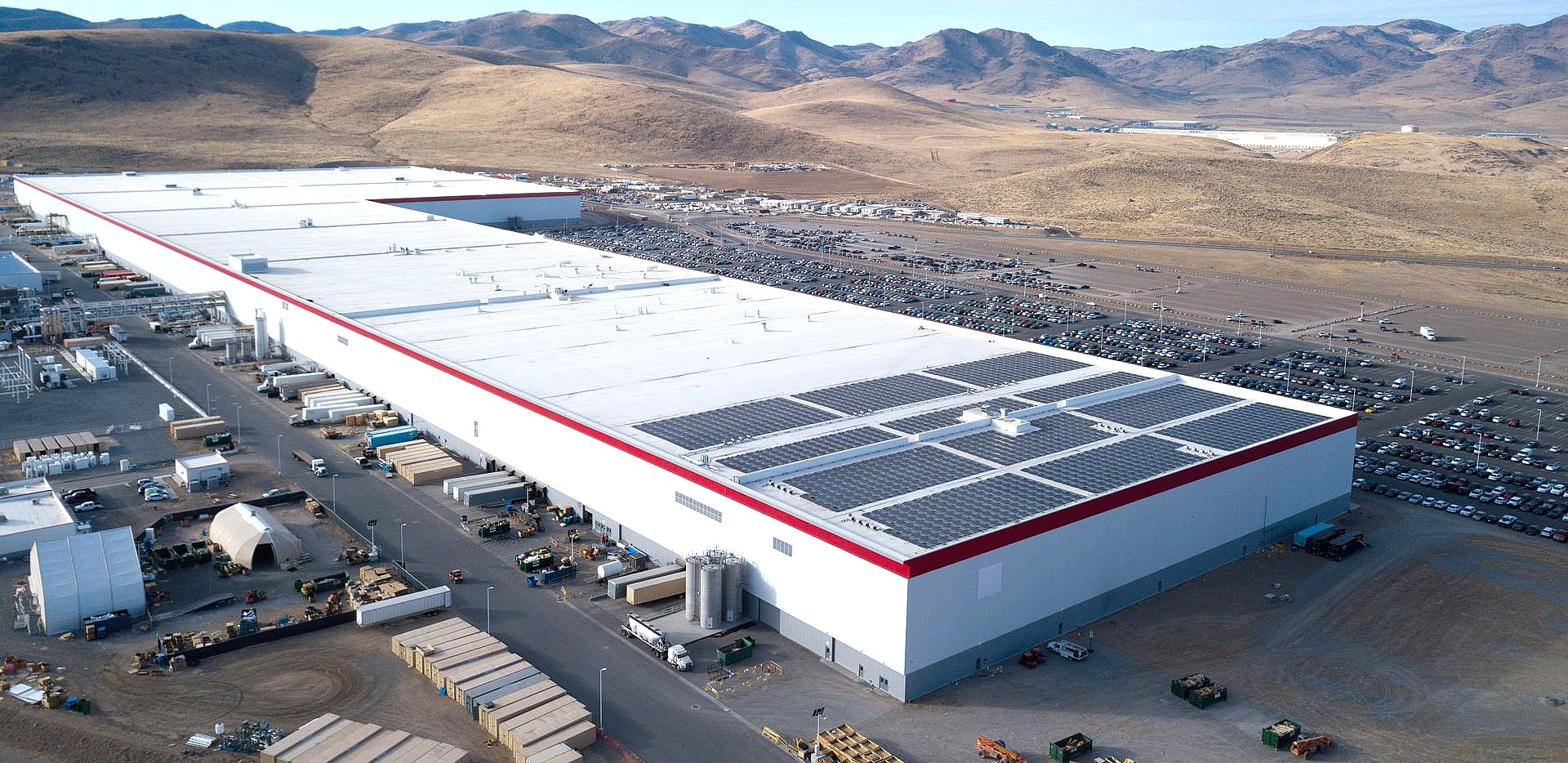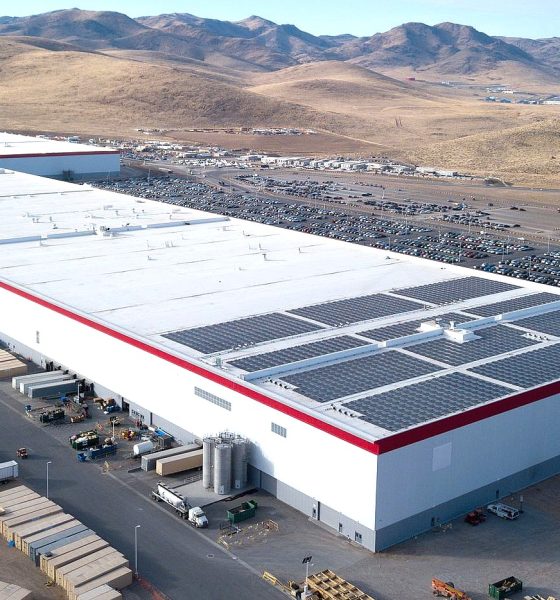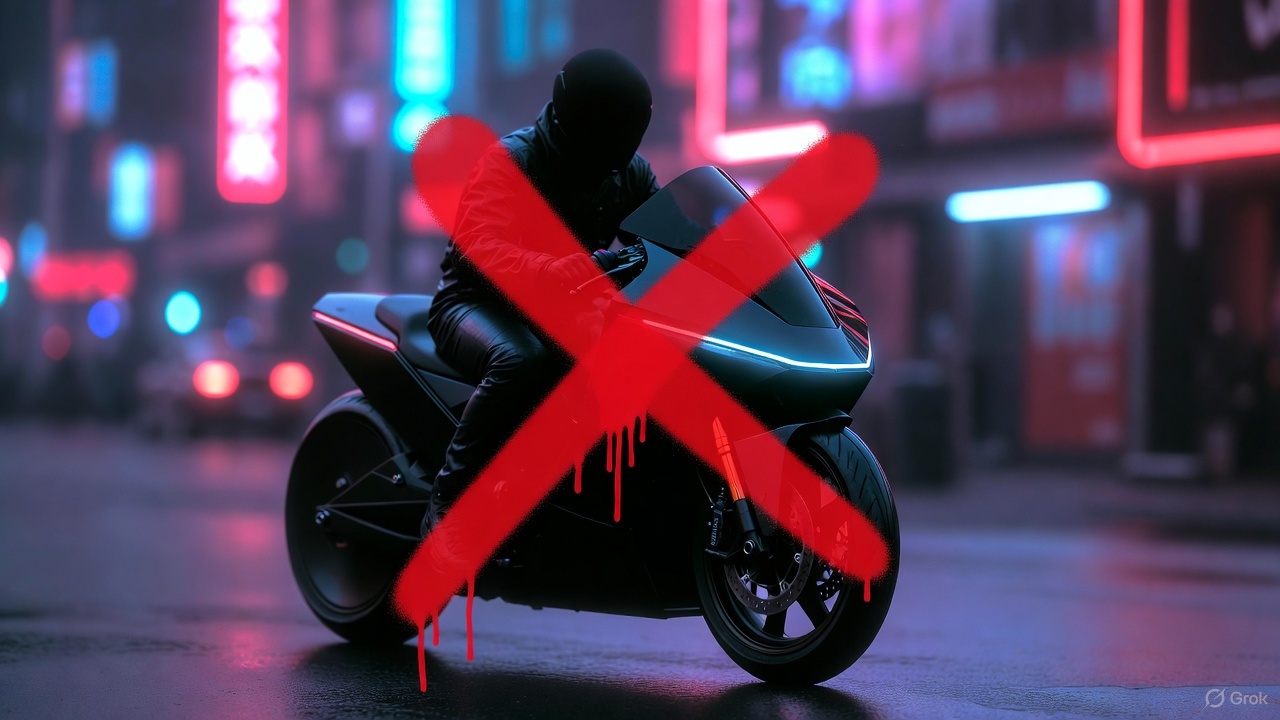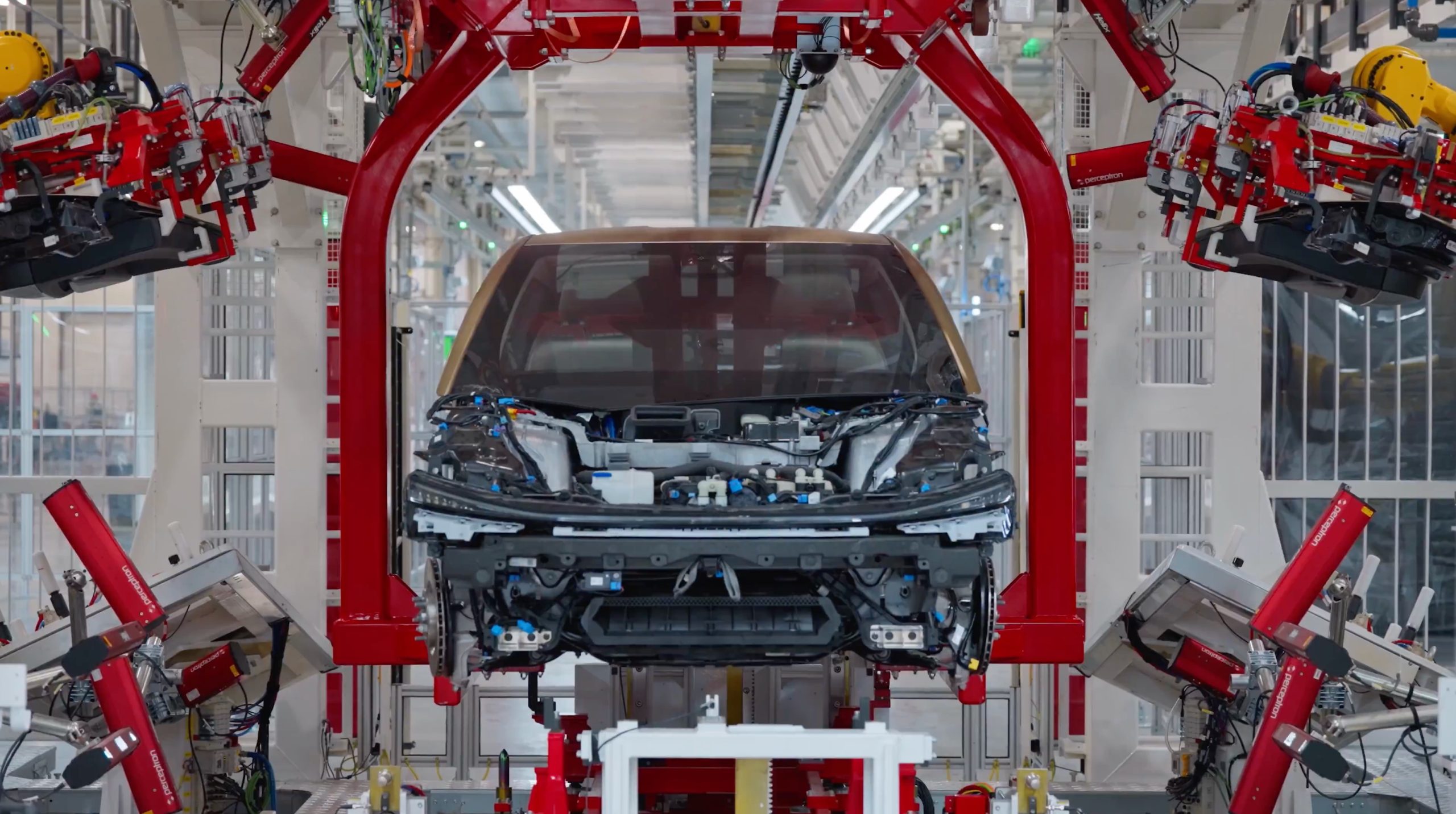

News
Tesla partner Panasonic is working on a prototype 4680 battery cell production line
During a briefing on Thursday, Panasonic’s Chief Financial Officer Hirokazu Umeda noted that the Japanese tech conglomerate is preparing to produce 4680 battery cells for Tesla. Umeda also mentioned that Panasonic started working on a prototype manufacturing line for the 4680 cells after Tesla’s Battery Day event last month.
“We have considerable know-how for that battery. We started working on it immediately after Tesla’s Battery Day and are also preparing to set up a prototype production line in parallel,” Umeda said, as per a NASDAQ report.
The 4680 cells, which feature 500% times more energy and 6X more power than the company’s existing batteries, are key to Tesla’s plans for the coming years. Tesla executives Elon Musk and Drew Baglino explained on Battery Day that the 4680 cell, which should pave the way for terawatt-hour scale battery production, is pertinent in the company’s push to accelerate the advent of sustainable energy.
Panasonic’s push to produce 4680 cells for Tesla is a rather bold move for the Japanese conglomerate, especially as the two companies’ joint venture at Gigafactory Nevada has experienced challenges over the years. The challenges experienced by Tesla and Panasonic were so notable that speculations from critics at one point suggested that the Japanese firm might cut ties with the American EV maker.
Needless to say, these speculations did not come to pass, especially as sales of Tesla’s electric cars stabilized profits for the EV maker and its battery partner. Tesla has so far accomplished five consecutive profitable quarters, and Panasonic, for its part, reported an 11% increase in second-quarter operating profit, beating analyst estimates.
In the recent briefing, the CFO further stated that apart from the prototype 4680 production line, Panasonic is also launching an additional production line at Giga Nevada. This additional line is estimated to boost the plant’s total capacity by 10% to about 38-39 GWh a year by 2022. “We are targeting a profit margin of around 5% at our Tesla battery business within two to three years,” Umeda said.
Ultimately, Panasonic’s development of a prototype 4680 cell production line for Tesla bodes well for the electric car maker’s rollout of its next-generation batteries. Despite Tesla ramping its own battery cell production activities at its pilot site in Fremont, after all, the company has emphasized that it needs partners like Panasonic, LG Chem, and CATL to produce more batteries than ever before. Panasonic’s prototype 4680 line seems to be a step towards this direction.

Elon Musk
Elon Musk reiterates why Tesla will never make an electric motorcycle
Tesla CEO Elon Musk preemptively shut down speculations about a Tesla road bike once more.

Tesla CEO Elon Musk preemptively shut down speculations about a Tesla road bike once more, highlighting that the electric vehicle maker has no plans to enter the electric motorcycle market.
Musk posted his clarification in a post on X.
Musk’s reply to a fun AI video
X user @Moandbhr posted an AI video featuring the Tesla CEO on the social media platform, captioning it with “Mr. Elon Musk Just Revealed the Game-Changing Tesla Motorcycle.” The short clip depicted Musk approaching a sleek, single-wheeled vehicle, stepping onto it, and gliding off into the distance amid cheers. The fun video received a lot of traction on X, gaining 3.1 million views as of writing.
Musk replied to the post, stating that a Tesla motorcycle is not going to happen. “Never happening, as we can’t make motorcycles safe. For Community Notes, my near death experience was on a road bike. Dirt bikes are safe if you ride carefully, as you can’t be smashed by a truck,” Musk wrote in his reply.
Musk’s Past Comments on Two-Wheelers
Musk also detailed his reservations about motorcycles in a December 2019 X post while responding to questions about Tesla’s potential ATV. At the time, he responded positively to an electric ATV, though he also opposed the idea of a Tesla road-going motorcycle. Musk did state that electric dirt bikes might be cool, since they do not operate in areas where large vehicles like Class 8 trucks are present.
“Electric dirt bikes would be cool too. We won’t do road bikes, as too dangerous. I was hit by a truck & almost died on one when I was 17,” Musk wrote in his post.
Considering Musk’s comments about dirt bikes, however, perhaps Tesla would eventually offer a road bike as a recreational vehicle. Such a two-wheeler would be a good fit for the Cybertruck, as well as future products like the Robovan, which could be converted into an RV.
News
Tesla continues growing its Cybercab production team with new job listings
Both positions are based in Gigafactory Texas, the site of the Cybercab’s initial production.

Tesla continues to build out its workforce for the upcoming Cybercab, with two new job listings for quality inspectors for the autonomous two-seater being listed in the company’s official Careers website.
Both positions are based in Gigafactory Texas, the site of the Cybercab’s initial production.
New Cybercab listings
Tesla recently added openings for “Quality Inspector, Cybercab” and “Quality Inspector, Cybercab – Incoming Quality” on its Careers website. The roles involve detailed inspections of Cybercab components using precision tools such as calipers, micrometers, and gauges, among others. Candidates must also identify non-conformances, document findings in Tesla’s quality management system and collaborate with production teams to resolve issues swiftly.
Overall, these new Cybercab-related roles highlight Tesla’s emphasis on precision for the two-seater’s innovative features, such as its inductive charging setup, which is not available on any Tesla consumer vehicle today. If any, the Cybercab’s Quality Inspectors will likely be operating in uncharted territory as the vehicle is being produced using Tesla’s new Unboxed process. Elon Musk has also noted that the Cybercab’s production line will resemble a high-speed consumer electronics line instead of a conventional automotive line.
Recent Cybercab Design Evolutions
Since its October 2024 unveiling, the Cybercab has undergone several refinements visible in recent prototypes, enhancing aerodynamics and manufacturability ahead of production. The tail design now rises slightly for better airflow, with a shortened rear body panel and repositioned red reflectors farther from the wheel arches.
Front-end updates include segmented daytime running lights, actual turn signals and a sharper splitter, while side repeater cameras have shifted forward for improved visibility. Tesla has also enlarged door panels for easier ingress and egress, swapped to unpainted tires without extended covers and adjusted the B-pillar forward and lower, likely to foster a more open cabin feel.
News
Tesla starts laying the groundwork for FSD tests in Austria
The job opening comes as the company pushes regulatory approvals and data collection in new European markets.

Tesla seems to be ramping its efforts to hire key personnel for FSD’s eventual expansion in Europe. This was hinted at in a new job listing for a vehicle operator role in Vienna, Austria.
The job opening comes as the company pushes regulatory approvals and data collection in new European markets.
Vienna’s vehicle operator role
Tesla posted the job for “Fahrer (Vehicle Operator) (m/w/d)” in its Vienna office on its Careers website, seeking candidates to drive and monitor test vehicles as part of the Autopilot and AI team. The role involves collecting real-world driving data to refine Full Self-Driving systems for the country’s local roads. Responsibilities include operating vehicles in urban and highway environments, documenting system performance, among other tasks.
Applicants need a valid Austrian driver’s license and at least two years of driving experience. Fluency in English is essential, along with a familiarity with driver assist systems. Tesla noted that the position offers a minimum annual gross salary of EUR 32,000, though relevant professional experience and qualifications will be taken into account. Similar to other Tesla roles, the position also offers TSLA stock as an incentive.
Tesla’s FSD Push in Europe
Tesla’s FSD efforts in Europe have accelerated in recent months, with significant progress in Spain serving as a key milestone. In July 2025, Spain’s Directorate-General for Traffic launched the ES-AV framework to standardize automated vehicle testing, authorizing Tesla for nationwide FSD trials with 19 vehicles under Phase 3, which allows optional onboard safety operators and remote monitoring.
The program, running through November 2027, aims to position Spain as a leader in the field, as DGT stated: “The program is designed to complement and enhance oversight, regulation, research, and transparency efforts, as well as to support innovation and advancements in automotive technology and industry.”
Beyond Spain, Tesla has conducted FSD demonstrations in Germany, France and Italy for consumers, while pursuing national approval in the Netherlands for early 2026.









